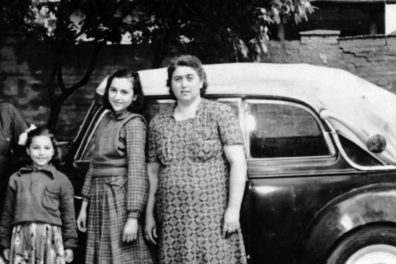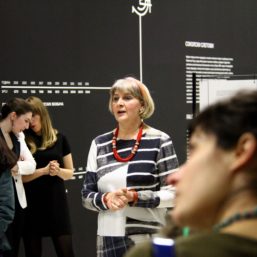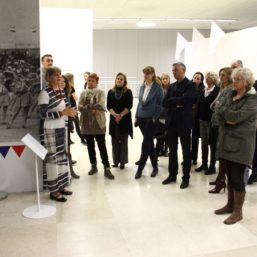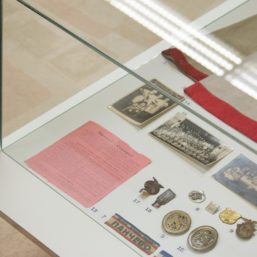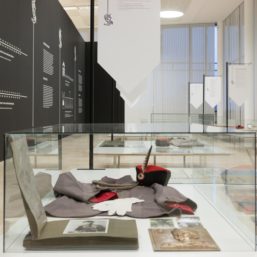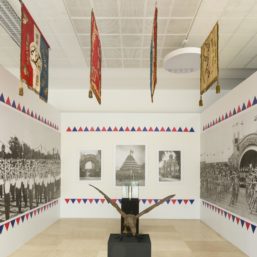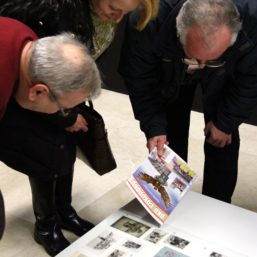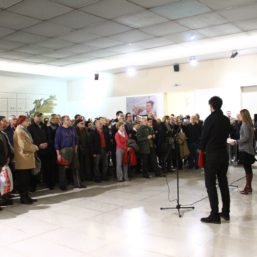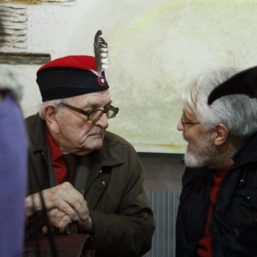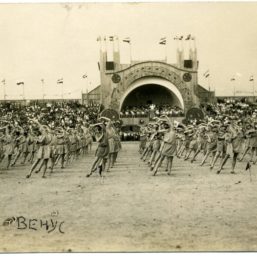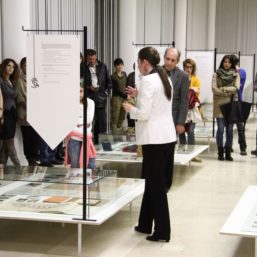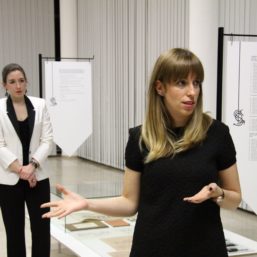To Be a Falcon Is to Be a Yugoslav
04.02-10.07.2016
On the set, in the building of The May 25 Museum, 175 objects (dress uniforms, Falcon dresses, hats, badges, documents, postcards, printed material, slet program, gala academy program, plans of Falcon homes) and 119 photos will be exhibited. The exhibition is divided into four areas: organization and membership; slets; Falcon homes and activity. Coauthors on the project are Jovana Karaulić, PhD of management in culture and media, Faculty of Dramatic Arts and Vladana Putnik, associate researcher from the Department of Art History, Faculty of Philosophy.
In addition to objects from the collection of MYH, objects from 11 Serbian museums and five from private collections will be exhibited. Although the Falcon movement lasted for almost a century, and with interruptions continues to this day, the exhibition presents only the period from 1919 to 1941. The set up accentuates dualism between the old and the new, the unknown and the known, the interpretation and indications, the documentary and the intuitive. The intention of authors was not to give a cross-section of previous interpretations of this topic, nor to review its musealisation, but by combining historical and artistic approach, to remind of the Falcon legacy and to interest the widest audience to engage in the research of their own and their family memories.
The aim of the exhibition is to present the movement that was very active in many spheres of social life (from sports and culture, to education and construction), that had a Pan Slavic spirit and was based on universal values: patriotism, nationalism, humanity, brotherhood, freedom, unity and integrity, while at the same time oriented towards nurturing a physically healthy and morally strong nation. This theme is very important for MYH because we are dealing with the Yugoslav idea in the period of the first Yugoslavia, i.e. the Kingdom. The idea for the research came from the fact that some phenomena, which culminated in socialist Yugoslavia, have roots in earlier periods.
During the period of the Kingdom of Yugoslavia, the Falcon Society of Yugoslavia had a particularly significant role in promoting integral Yugoslavism. Their cultural and educational activities included a large percentage of population and they had a significant impact on education in rural areas of the country. After World War II, Falcon activities were overtook by the Sports Association Partizan and it continued to work on the expansion of Yugoslavism with almost the same actions. The exhibition will show different types of activities, and also what were the long-term social and political consequences of this engagement. With the project To Be a Falcon Is to Be a Yugoslav MYH begins the period of more extensive research and widening the fund that testifies about the legacy of the first Yugoslavia.
Partners on the project are: Archives of Yugoslavia, Sombor City Museum, Historical Museum of Serbia, Belgrade City Museum, Museum of Novi Sad, the Museum of Applied Arts, National Museum of Zrenjanin, National Museum of Kragujevac, National Museum of Kraljevo, Serbian Falcon Union, Faculty of Sports and Physical Education of the University of Belgrade, Fond royal court.
A Short History of Falcon Movement
Falcon movement was founded in Prague in 1862 as a response to the attempts of Germanization of the Slavic population in the Austrian monarchy. It was named after a falcon, the bird that symbolizes chivalry, strength, speed and skill in the Serbian folk poetry. Falcon ideas of liberty, fraternity, unity, perseverance and patriotism were accepted even beyond the Czech Republic and the Falcon movement became a Pan Slavic movement. Already in 1863 a Falcon society was formed in Slovenia; in 1874, Croatian Falcon Association; and in 1891, the First Belgrade society for gymnastics and fighting changed its name to Belgrade gymnastic society Falcon.
Basically an idea of liberation, the Falcon movement wished to create a physically ready, honest and nationally conscious individual who will have the power to defend national interests and his own cultural identity. Preservation of national tradition and diversity was in line with the idea Falcon movement to Slavism – Slavism to Humanity. The movement worked on cultural and educational uplifting and moral education of young people to the utmost perfection.
Falcon achievements, manifestations and construction-work were a part of the Yugoslav heritage, as an element of individual memory, but not of collective memory of the community.
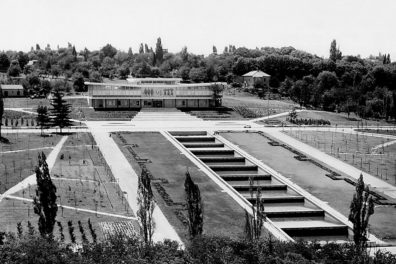
The Origins: The Background for Understanding the Museum of Yugoslavia
Creation of a European type of museum was affected by a number of practices and concepts of collecting, storing and usage of items.
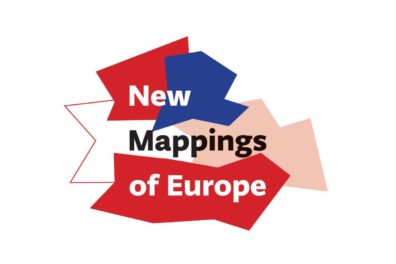
New Mappings of Europe
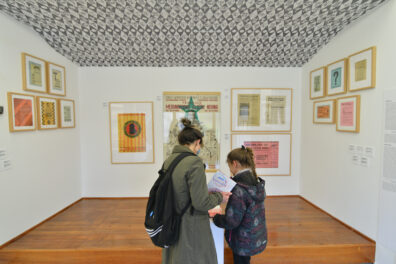
Museum Laboratory
Starting from the Museum collection as the main source for researching social phenomena and historical moments important for understanding the experience of life in Yugoslavia, the exhibition examines the Yugoslav heritage and the institution of the Museum
